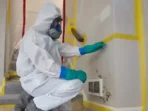Carpets play a significant role in our homes, providing warmth, comfort, and style. However, over time, they can accumulate dirt, stains, and allergens, impacting both their appearance and indoor air quality. Enter carpet cleaning, a crucial process that involves both science and technology. In this article, we’ll delve into the science of carpet cleaning, exploring how it works and why it matters for the health and longevity of your carpets.
The Basics of Carpet Cleaning
Before we dive into the science behind carpet cleaning, let’s start with the basics of the process. At its core, carpet cleaning aims to remove dirt, stains, allergens, and odors from carpets, leaving them clean, refreshed, and visually appealing. There are various methods of carpet cleaning, but we’ll focus on one of the most common: hot water extraction (also known as steam cleaning).
Hot Water Extraction: The Science Behind It
Hot water extraction is a widely recommended and effective method for deep carpet cleaning. It’s called “hot water” extraction, but it’s not actually steam cleaning; it uses hot water to achieve its cleaning power. Here’s how it works from a scientific perspective:
- Preparation and Vacuuming: The process begins with thorough vacuuming to remove loose dirt, dust, and debris from the carpet’s surface. This step is essential because it prevents the cleaning solution from mixing with excess dirt and becoming less effective.
- Pre-treatment: A cleaning solution is applied to the carpet. This solution typically contains a combination of detergents, surfactants, and solvents. The science behind this step involves breaking down the bonds between dirt particles and carpet fibers, making it easier to remove them.
- Hot Water Injection: Now comes the “hot water” part. Hot water, often mixed with the cleaning solution, is injected into the carpet at high pressure. The heat of the water helps to break down and dissolve dirt, stains, and oils, making them easier to extract. The science here is all about the increased efficiency of hot water in dissolving substances compared to cold water.
- Agitation: To ensure thorough cleaning, the carpet is often agitated using brushes or other tools. This process helps dislodge dirt and debris that may have become trapped in the carpet fibers.
- Extraction: The final step is extraction, where a powerful vacuum system is used to immediately remove the hot water, cleaning solution, and dissolved dirt from the carpet. The science here involves the principles of fluid dynamics and suction power. The high-pressure injection and immediate extraction ensure that dirt is lifted away from the carpet, leaving it clean and nearly dry.
Why Carpet Cleaning Matters
Now that we understand the science behind carpet cleaning, let’s explore why it matters for your home and your carpets:
- Improved Indoor Air Quality: Carpets act like filters, trapping dust, allergens, and pollutants. Regular cleaning removes these contaminants, leading to better indoor air quality and reducing the risk of allergies and respiratory issues.
- Extended Carpet Life: By removing dirt, debris, and oils that can cause wear and tear, carpet cleaning can significantly extend the life of your carpets. The science here is straightforward: cleaner carpets last longer.
- Stain Removal: Effective carpet cleaning can tackle tough stains and spots, preserving the appearance and aesthetics of your carpets. The science involves the use of detergents and solvents to break down stain molecules.
- Allergen Control: For households with allergies, carpet cleaning is crucial in reducing allergen levels. It removes dust mites, pet dander, and other allergens that can accumulate in carpets over time.
- Odor Elimination: Carpets can trap odors from pets, spills, and everyday life. The science of carpet cleaning involves using cleaning solutions to neutralize and eliminate these odors.
- Enhanced Appearance: A clean carpet looks more vibrant and inviting. Carpet cleaning can revive the colors and patterns, enhancing the overall appearance of your home.
The Role of Chemistry in Carpet Cleaning
Chemistry plays a vital role in carpet cleaning. The cleaning solutions used are carefully formulated to interact with dirt and stains effectively. Here are some key chemical processes involved:
- Dissolution: Cleaning solutions contain detergents and surfactants that dissolve dirt, oils, and stains. These compounds work by breaking down the molecular bonds between these substances and the carpet fibers.
- Emulsification: Surfactants in the cleaning solution emulsify oily and greasy substances, allowing them to be easily suspended in water and extracted.
- Ion Exchange: Some cleaning solutions use ion-exchange chemistry to remove stains. Positively charged ions in the solution can attract and bind to negatively charged stain molecules, effectively removing them from the carpet fibers.
- pH Balance: Maintaining the right pH balance in cleaning solutions is crucial. Certain stains and substances respond better to either acidic or alkaline solutions. Proper pH balance ensures that the cleaning process is effective and safe for the carpet.
The Importance of Professional Carpet Cleaning
While there are DIY carpet cleaning methods available, professional carpet cleaning services often yield superior results. Professionals have access to high-powered equipment and specialized cleaning solutions that can provide a deeper and more thorough clean.
Additionally, professionals are trained to assess the type of carpet, the level of soiling, and the appropriate cleaning methods, ensuring that your carpets are cleaned effectively without damage.
Conclusion
The science of carpet cleaning is a fascinating blend of chemistry, physics, and technology. Understanding how it works and why it matters is crucial for maintaining a clean, healthy, and visually appealing home. Whether you opt for professional carpet cleaning or tackle the task yourself, the science behind it all is working to keep your carpets looking their best and your indoor environment as fresh as possible. So, the next time you walk on your clean, refreshed carpet, you can appreciate the science that made it all possible.







